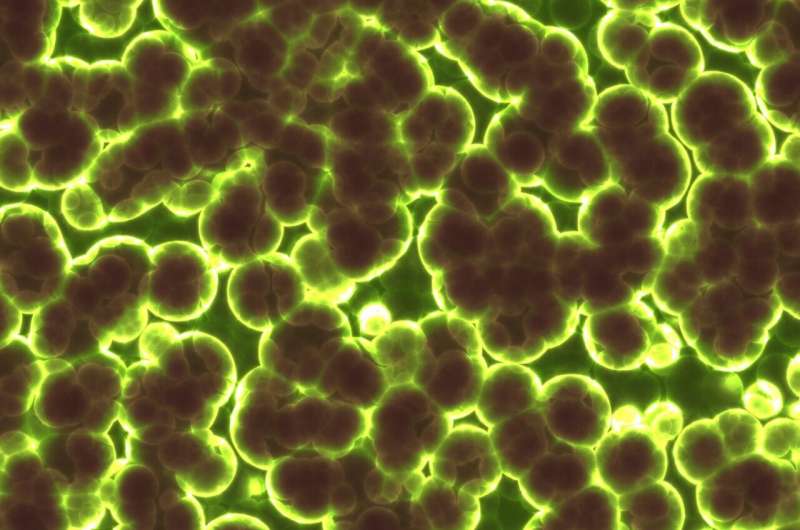Dual wavelengths of light shown to be effective against antibiotic-resistant bacterium

Scientists have combined two light wavelengths to deactivate a bacterium that is invulnerable to some of the world’s most widely used antibiotics, giving hope that the regime could be adapted as a potential disinfectant treatment.
Under the guidance of project leader Dr. Gale Brightwell, scientists at New Zealand’s AgResearch demonstrated the novel antimicrobial efficiency of a combination of two light wavelengths against a ‘superbug’ known as antibiotic-resistant extended-spectrum beta-lactamase E. coli.
Antimicrobial resistance (AMR) is a major global threat of increasing concern to human and animal health, with 10M deaths due to AMR forecast to occur every year after 2050. There is now a critical need to develop safe and effective antimicrobial technologies that do not result in new and emerging resistance, corresponding author Amanda Gardner explained.
A combination of far UVC (222 nm) and blue LED (405 nm) light have been shown to be effective in the inactivation of a wide range of microorganisms while being much safer to use and handle as compared to traditional UVC at 254 nm, she said.
“The E. coli we chose for this investigation were extended-spectrum beta- lactamases producing E. coli (ESBL-Ec) as these bacteria produce enzymes that break down and destroy commonly used antibiotics, including penicillins and cephalosporins, making these drugs ineffective for treating infections,” she said.
“This intrinsic resistance means that there are fewer antibiotic options available to treat ESBL-producing Enterobacteriaceae infections. In many cases, even common infections such as urinary tract infections require more complex treatments. Instead of taking oral antibiotics at home, patients with these infections might require hospitalization and intravenous (IV) carbapenem antibiotics.
“The coupling of far-UVC and blue LED light together increases the effectiveness of the two individual lights through the deployment of different mechanisms of microorganism inactivation. There is great potential for these two light wavelengths to be used together in many applications where safety to the end user is of most importance,” she said.
The team found that a combination of dual far-UVC and blue LED light could be used to disinfect both antibiotic resistant and antibiotic sensitive E. coli, offering a non-thermal technology that may not drive further antibiotic resistance.
However, if exposed to sub-lethal levels of dual and far-UVC light, the antibiotic resistant E. coli tested did exhibit light tolerance. One surprising finding was that this light tolerance was only exhibited by the antibiotic resistant E. coli and not the antibiotic sensitive E. coli that was also tested.
Gardner says further work is needed to understand whether the light tolerance is due to a genetic change, or some other mechanism.
“It is also important to investigate the development of light tolerance in other antimicrobial-resistant bacteria and to determine the minimum dose of far-UVC light that can create light tolerance as well as the potential of further resistance development to other things such as sanitizers, heat, and pH in bacteria for application purposes,” she said.
The findings are published in the Journal of Applied Microbiology.
More information:
Amanda Gardner et al, Light Tolerance of Extended Spectrum ß-lactamase Producing Escherichia coli Strains After Repetitive Exposure to Far-UVC and Blue LED Light, Journal of Applied Microbiology (2023). DOI: 10.1093/jambio/lxad124
Provided by
Applied Microbiology International
Citation:
Dual wavelengths of light shown to be effective against antibiotic-resistant bacterium (2023, July 18)
retrieved 18 July 2023
from https://phys.org/news/2023-07-dual-wavelengths-shown-effective-antibiotic-resistant.html
This document is subject to copyright. Apart from any fair dealing for the purpose of private study or research, no
part may be reproduced without the written permission. The content is provided for information purposes only.
For all the latest Science News Click Here
For the latest news and updates, follow us on Google News.

